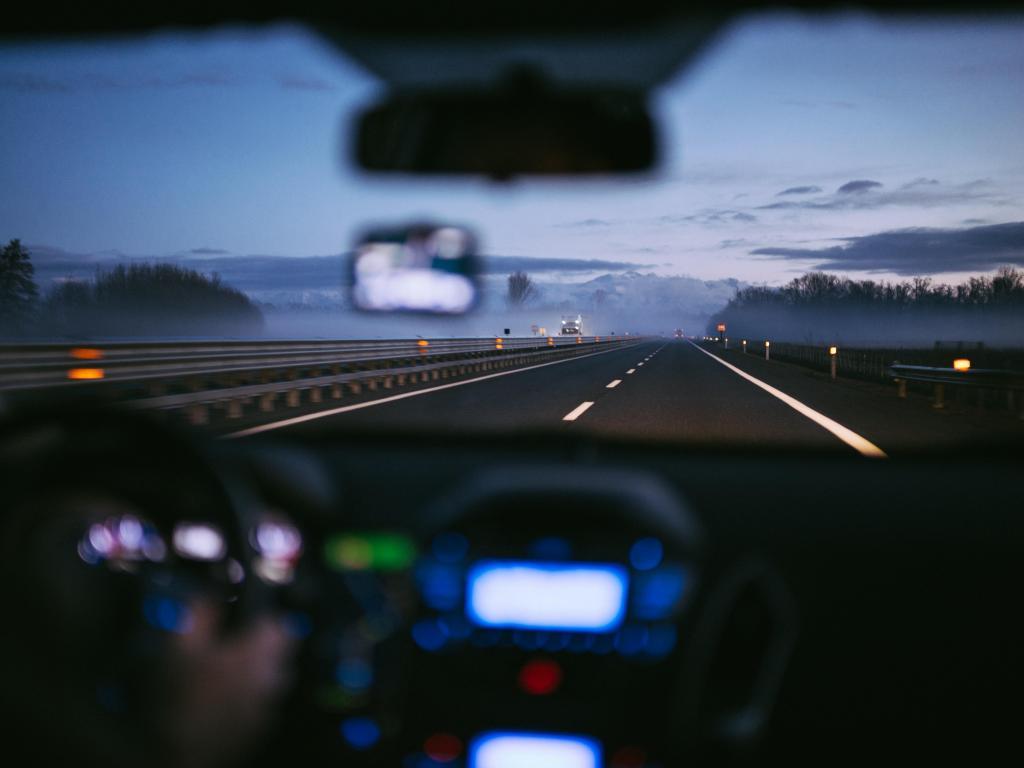Driving at night is always more dangerous than driving during the day; the reduced visibility that comes with the low light of nighttime creates an environment that conceals risks and requires drivers to be more alert. However, there are certain actions that drivers can take to drive safely at night.
The best tips for driving at night
Do not text and drive. Do not send text messages or post on social media while driving at night, or during the day. Utilize your car’s blue tooth or hands free features to respond to text messages or phone calls, or place your phone in the back seat of the car if this is too tempting. Sending or reading a text message takes the average person approximately five seconds. According to The National Highway Traffic Safety Administration, when driving at fifty-five miles per hour, five seconds is equivalent to the length of a football field, creating a significant chance for a serious accident to occur.
Pay attention to other drivers. As most people overindulge in alcohol or abuse other drugs at night more often than during the day, your chances of encountering a driver who is operating their vehicle under the influence of alcohol or drugs at increases at night.
Pay attention to all drivers on the road around you. If they are showing signs of driving under the influence of alcohol or drugs such as weaving in the road, driving excessively fast or slow, braking abruptly, etc, exercise caution. It may be appropriate to call the police to report a possible drunk driver and change your route to your destination if possible.
Consider the weather. If there is a strong rain storm, a heavy snow storm, or an excessive amount of ice, limit driving at night as much as possible and only do so in the case of an emergency.
Undergo regular eye examinations. If you struggle to see in the darkness, schedule an eye examination regularly to ensure that you are still able to drive safely at night.
Use your car’s lights appropriately. As the sun begins to set and darkness begins to set in, turn your headlights on a low setting to improve your car’s visibility to other drivers. As evening turns to nighttime, use your headlight’s brightest setting when there is no oncoming traffic to maximize your visibility as you drive. When you see an oncoming vehicle, turn your headlights to a lower setting to avoid impacting the driver’s visibility.
In the event that an oncoming driver is using their headlights on a high setting, do not look directly at the lights. Focus on the road and do not attempt to overcorrect your course of direction.
Clean your windows. Keep the windows of your car clean to avoid glare and condensation. In winter months, always completely brush all snow and scrape all the ice off all the windows of your car. Further, ensure that your windshield wiper fluid is full to aid in removing ice from your windshield as you are driving.
Watch out for two and four-legged pedestrians. If you are driving in populated areas, especially in residential neighborhoods or when driving by bars, pubs, restaurants and movie theaters, always drive slowly and look for pedestrians. If you are in a more rural area, scan the sides of the road for animals that may be attempting to cross the street. Deer in particular are dangerous as they are the top animal-related insurance claim in the US. It is important to stay alert and do everything possible to avoid hitting a deer while out on the roaed. No matter where you drive, be on the lookout for people riding bicycles or motorcycles and be sure to exercise caution when going around blind corners or over blind hills.
Take breaks. If you have been driving a long distance or have been particularly busy and start to feel tired, listen to your body and take a break to avoid falling asleep or becoming distracted while driving. If you are unable to go home or stay at a friend’s, find a hotel and get some sleep. Falling asleep while driving is incredibly dangerous, but preventable if the driver is responsible and takes breaks as needed.
Do not rush. To avoid feeling pressure to speed and becoming distracted by feeling stress to be punctual, give yourself additional time to reach your destination. By leaving a few minutes early, you can be more relaxed and focus on driving safely and being alert.
Follow the Golden Rule. Do unto others as you would have others do unto you. If you find another driver’s actions unsafe, inconsiderate or hazardous, be sure that you do not repeat those actions. Do your part to make the road a safer place.
By following these tips for driving at night, you can decrease your risk of being involved in an automobile accident at night.

